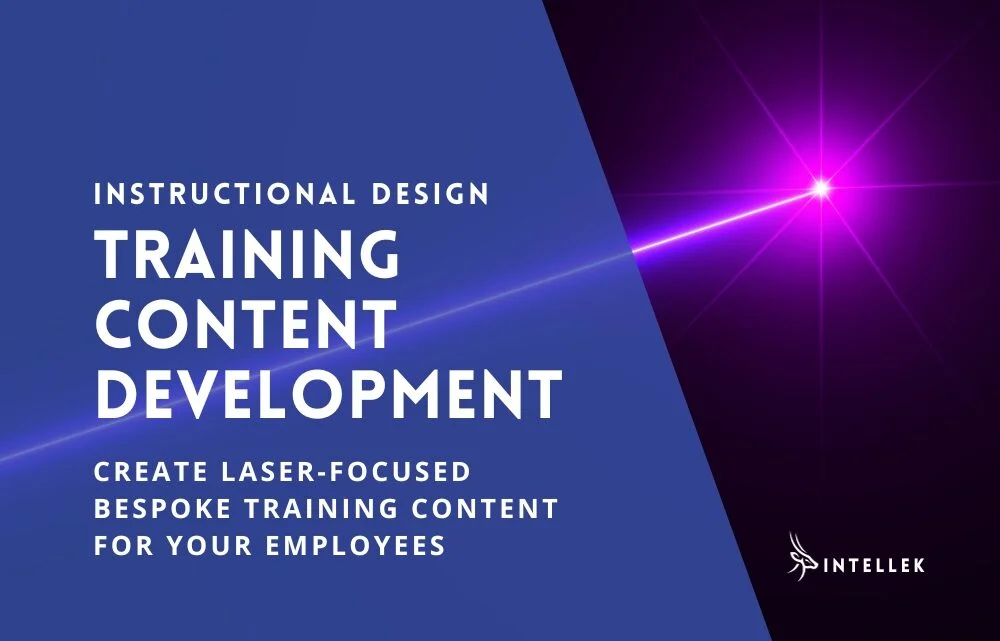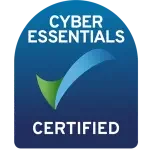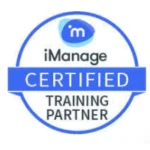
When it comes to employee training, taking a one-size-fits-all approach rarely delivers meaningful business results. Generic off-the-shelf content can miss the mark when it comes to aligning with a company’s specific strategic needs.
The solution is to adopt a training content development process that allows the creation of bespoke, customized e-learning experiences. By analyzing organizational and employee needs and mapping out focused training content, companies can craft targeted modules personalized to their business environment and audience.
IN THIS ARTICLE...
Why Bespoke Training Content Matters
Bespoke training is customized to precisely match a company’s specific needs. Bespoke training matters for businesses for a few key reasons and this results in several key benefits:
- Tight Alignment with Business Needs – The content directly trains employees on the exact skills and knowledge the business requires based on its goals and gaps.
- High Engagement Levels – Employees care more about content that clearly applies to their jobs and interests them specifically. Relevance drives motivation.
- Supports and Adapts to Learners – Tailored content can be shaped to the learning styles and preferences of different employees, improving adoption.
- Role-specific Specialization – Content can target specialized development needs for specific teams like sales versus IT.
- Flexibility and Scalability – Digital delivery means bespoke training can scale across the organization while updating quickly.
By directly matching educational content to organizational needs, bespoke training builds relevant skills, drives engagement, and lifts workforce capability in the areas that matter most to the business. This leads to real performance gains.
6 Top Frameworks for Training Content Development
While there are many training content development process models, ADDIE and SAM are likely the most widely recognized and used frameworks for creating training content. The choice does depend on the specific situation and context for training.
There is no single universally agreed upon training material development process, but some of the most commonly used approaches include:
1. ADDIE Model (Analysis, Design, Development, Implementation, Evaluation)
The ADDIE training model is a common instructional systems design model consisting of five distinct phases – Analyze, Design, Develop, Implement, and Evaluate. It provides a systematic framework for developing effective training.
2. SAM (Successive Approximation Model)
SAM is an iterative approach to training development where you repeatedly improve and refine the training materials through prototyping, testing, analyzing, and refining cycles.
3. Backward Design and Action Mapping
Backward Design and Action Mapping are two complementary approaches that can be useful when creating effective training materials.
Backward Design is a curriculum development model that focuses on identifying the desired results or learning outcomes first, before determining the instructional methods and assessment strategies. Action Mapping, on the other hand, is a systematic approach to designing and developing training materials that focuses on the specific actions or tasks that learners need to perform on the job.
Backward Design and Action Mapping can be powerful tools for creating training materials that are focused, relevant, and effective. Backward Design provides a framework for aligning the training with desired learning outcomes, while Action Mapping ensures that the training addresses the specific actions and tasks that learners need to perform on the job.
4. Dick and Carey Systems Approach Model
Dick and Carey established a very structured and comprehensive systems view model of training development consisting of 10 steps including identifying goals, analyzing learners and contexts, writing performance objectives, developing assessments, and evaluating effectiveness.
5. Gagnes 9 Principles
Gagne’s principles are aimed at deeper, more impactful learning. Key steps include engaging learners, activating prior knowledge, clearly explaining new material, providing practice, assessing progress, and facilitating lasting retention and transfer of skills aligned to desired outcomes.
6. Rapid Prototyping
With the Rapid Prototyping approach you use the design, development, and evaluation phases of the ADDIE model to create quick drafts and iterations of training materials; review them, make improvements, and continue to refine and upgrade iteratively in a cyclic process. The focus here is on efficient revision.
Creating Laser-Focused Training Content
Think of creating impactful bespoke training content as similar to making a custom hand tool for a very specific task. You need to thoroughly understand the who, what, when, where, why, and how before you start building – the same goes for crafting tailored training.
The result? Laser-focused training that builds capability by addressing root causes, not just symptoms. Aligning to needs analysis guarantees relevance that translates to engagement, skill adoption, and measurable business impact.
Analyzing Organizational Training Needs
First, you must analyze what specific skills, knowledge, or behaviors your organization needs built. Think – where are the gaps holding us back? What capabilities aligned with our strategy need strengthening? Assessing across roles provides insights into priorities.
Understanding Individual Learner Needs
Just as each carpenter has tool preferences, people absorb training differently thanks to varied learning styles. Getting input on expectations, motivations and barriers to learning is key. Think of surveys, interviews, and focus groups. This builds empathy.
Designing Focused Training Materials
With needs analysis complete, the real work starts – mapping objectives and crafting content flows purpose-built to close identified skill gaps. It means tailoring tone, examples, and format to resonate across roles – like customizing tools for ergonomic comfort.
Rapid Iteration of Courses & Modules
Finally, taking a rapid prototyping approach allows the quick creation of modular digital content for testing and user feedback instead of over-engineering the first draft. Sharpen your training content development process through iteration, like continual improvements on tools over time.
Tools to Enable Bespoke Content Development
Creating and deploying ongoing bespoke training requires using platforms, software, and training content development tools designed for the unique needs of custom eLearning development, delivery, and iteration.
Learning Content Management Systems can organize the storage, versioning, compliance review, and meta-tagging required for large libraries of digital learning objects, templates, and modules.
Adobe Captivate can be used to design eLearning and allows non-technical users to quickly build out interactive modules with assessments, dialogue simulations, and rich media content.
Figma is a useful tool that can be used for Rapid Prototyping for your eLearning content. An easy-to-use platform that allows you to draft up courses and modules for initial testing and review.
Intellek Create our breakthrough content authoring tool allows subject matter experts with no coding skills to create interactive micro-learning experiences, guiding users through critical on-screen tasks within underlying business applications. Visually intuitive flows map the exact on-screen steps users should take while conducting basic or complex specialized tasks. This advances beyond passive videos or text instructions to experiential learning journeys which can easily be adapted as software applications change.
Developing bespoke training requires delivering specialized skills learning to different employee groups exactly when they need it. Subject matter experts with no technical skills can create custom interactive guides that walk users step-by-step through learning complex tasks.
For example, a finance manager could build an interactive guide that shows accountants what data to analyze for a quarterly report and walks them through doing that analysis on their computer.
Intellek Create allows building step-by-step learning journeys right inside your business software, using simple click tools. This microlearning content can then be used to train groups with relevant skills as they do their actual workflows. Learning becomes a dynamic experience and can easily be adapted as software changes.
Using Content Development Tools Together
Intellek offers an integrated suite of tools to build and deliver custom training. The combination of our LMS, content authoring tool, and digital adoption platform optimizes the building and delivery of bespoke training. Together these tools make it easy for subject matter experts with no technical background to create and update custom training. And push this guidance to employees at the right times.
This complete training ecosystem powers the entire customized training process – from collaborative content creation to efficient management and contextual delivery. This end-to-end solution enables any organization to build its strategic “bespoke” training capability at scale. Investing in bespoke training pays off through a more skilled, productive workforce driving results.
Best Practices for Training Content Development Process
Practice these strategies to ensure bespoke training content development efforts scale sustainably with maximum performance impact as the company’s needs evolve and teams distribute capability-building across the organization. While tools enable the bespoke training process, follow best practices to maintain training’s impact over the long run:
Always Gather Learner Feedback
Continually collect input from employees going through new bespoke training. This allows you to rapidly improve content and formats that aren’t working, and strengthen areas that are.
Centralize and Organize All Content
Use a learning content management system like Intellek LCMS to store modules, materials, and resources in one, easily searchable place. This simplifies updating and distributing content.
Support Ongoing Development
Provide subject matter experts with simple template tools like Intellek Create that facilitate ongoing self-service development of guides and microlearning. This sustains freshness.
Instill Governance
Have a core team within your training content development process responsible for reviewing all materials to ensure quality control and compliance before rollout. Publishing safeguards matter as volume increases.
Realizing Workforce Potential with Bespoke Training
Implementing a training material development process has a transformational upside for an organization’s human capital capabilities. The payoff in productivity and performance makes the investment in dedicated tools and teams worthwhile.
When executed effectively, bespoke training can:
- Accelerate skills building in strategic areas
- Improve content relevance which drives engagement
- Support specialized learning needs across roles
- Adapt content quickly to ever-changing business environments
The following best practices are critical to succeed with bespoke training content development long term:
- Analyze Needs – Survey employees and leaders to identify specific capability gaps limiting objectives.
- Centralize Content – Use an LCMS to organize modules for discovery and updates.
- Sustain Development – Provide intuitive tools for subject matter experts to continuously create guides.
- Maintain Quality – Govern all custom content through rigorous compliance reviews.
- Gather Feedback – Continually collect input to fix issues and improve relevancy.
By putting in place the frameworks to develop, manage, and deliver tailored learning experiences, organizations can transform skill building from a “check the box” exercise into a true multiplier of workforce potential.
The future favors bold organizations that recognize learning is how you manifest competitive advantage. Invest in your people through bespoke training content, and let capability fuel your rise.
Intellek (formerly TutorPro) is a founding member of the learning technology industry. With a presence in the USA, UK, Canada, and the EU – for over 30 years we have pioneered the development of cutting-edge eLearning software and online training solutions, with a large and diverse portfolio of international clientele.
Disclaimer: We use all the tools available including generative AI to create relevant and engaging content.





